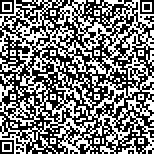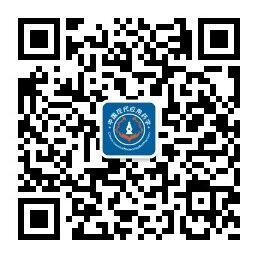| 引用本文: | 夏勇,陈钢,董晓岚,郑云燕.枸杞多糖对胆汁淤积性肝损伤大鼠的炎症和氧化应激影响的研究[J].中国现代应用药学,2025,42(7):33-42. |
| xia yong,chen gang,dong xiao lan,郑云燕.Study on the effects of Lycium barbarum polysaccharide on inflammatory response and oxidative stress in rats with cholestatic liver injury[J].Chin J Mod Appl Pharm(中国现代应用药学),2025,42(7):33-42. |
|
| |
|
|
| 本文已被:浏览 48次 下载 26次 |

码上扫一扫! |
|
|
| 枸杞多糖对胆汁淤积性肝损伤大鼠的炎症和氧化应激影响的研究 |
|
夏勇,陈钢,董晓岚,郑云燕
|
|
1.浙江省疾病预防控制中心;2.浙江省中医院
|
|
| 摘要: |
| 目的 观察枸杞多糖 (Lycium barbarum polysaccharide, LBP)干预对胆汁淤积性肝损伤大鼠炎症反应及氧化应激的影响,为其深度开发提供依据。方法 用α-萘异硫氰酸酯(alpha-naphthylisothiocyanate, ANIT)诱导大鼠建立胆汁淤积性肝损伤模型,分为模型组、LBP低剂量组(LBP 170mg.kg-1)、LBP高剂量组(LBP 510mg.kg-1)及阳性对照组(熊去氧胆酸60 mg.kg-1),另设正常对照组。持续灌胃给相应药液6周后,采集血液及肝组织样本,检测肝损伤血清标志物、白细胞分类、炎症因子、氧化应激、信号通路调控蛋白指标,并对肝脏切片进行组织病理学观察评分。结果 与正常对照组比较,模型组大鼠肝损伤血清标志物、白细胞分类、炎症因子、氧化应激、信号通路调控蛋白相对表达量指标及组织病理学观察评分均出现明显改变,差异有统计学意义(SNK—q检验或H检验,P<0.01或0.05);与模型组比较,LBP 高剂量组大鼠肝损伤血清标志物及白细胞分类指标γ-GGT、TBA、TBIL、ALT、WBC、LYMPH、NEUT下降,差异有统计学意义(SNK—q检验,P<0.05),炎症因子及氧化应激指标TNF-α、IL-6、COX-2、MCP-1、MDA含量下降,SOD、GSH-PX活性增强(SNK—q检验,P<0.05),TLR4/pNF-κB通路调控蛋白TLR4、pNF-kB、MyD88的表达水平下调(SNK—q检验,P<0.05), SIRT1/Nrf2通路调控蛋白SIRT1、Nrf2表达水平上调(SNK—q检验,P<0.05),肝脏炎症细胞浸润,胆管、胶原纤维增生减轻,组织病理学观察评分下降,差异有统计学意义(H检验,P<0.05);LBP 低剂量组大鼠各项指标与模型组差别不明显,差异均无统计学意义(SNK—q检验或H检验,P>0.05)。与模型组比较,阳性对照组大鼠肝损伤血清标志物、白细胞分类、氧化应激部分指标改善,组织病理学观察评分降低,差异均有统计学意义(SNK—q检验或H检验,P<0.01或0.05)。结论 在本试验条件下,LBP的干预对胆汁淤积性肝损伤大鼠的炎症反应和氧化应激有缓解作用,其作用机制可能与下调TLR4/NF-κB及上调SIRT1/Nrf2通路的信号转导有关。 |
| 关键词: 枸杞多糖 胆汁淤积性肝损伤 炎症反应 氧化应激 |
| DOI: |
| 分类号: |
| 基金项目:浙江省中医药科学研究基金项目(2022ZB091); 浙江卫生健康科技计划项目(2022PY045) |
|
| Study on the effects of Lycium barbarum polysaccharide on inflammatory response and oxidative stress in rats with cholestatic liver injury |
|
xia yong1, chen gang1, dong xiao lan2, 郑云燕3
|
|
1.Zhejiang Provincial Center for Disease Control and Prevention,;2.Zhejiang Provincial Hospital of Traditional Chinese Medicine,;3.Zhejiang Provincial Center for Disease Control and Prevention
|
| Abstract: |
| ABSTRACT: OBJECTIVE Observing the effects of Lycium barbarum polysaccharide (LBP) intervention on inflammatory response and oxidative stress in rats with cholestatic liver injury, providing a basis for its deep development. METHODS Use ANIT induced cholestatic liver injury(CLI) model in rats, divided into model group, LBP low-dose group (LBP 170mg. kg-1), LBP high-dose group (LBP 510mg. kg-1), and positive control (ursodeoxycholic acid 60 mg. kg-1), with an additional normal control. After continuous gavage of the corresponding medication for 6 weeks, blood and liver tissue samples were collected to detect serum markers of liver injury, white blood cell classification, inflammatory factors, oxidative stress, signal pathway regulatory protein indicators, and histopathological observation scores were performed on liver slices. RESULTS Compared with the normal control, the model of rats showed significant changes in serum markers of liver injury, blood cell classification, inflammatory factors, oxidative stress, relative expression indicators of signaling pathway regulatory proteins, and histopathological observation scores, with statistical significance (SNK-q test or H-test, P<0.01). Compared with the model group, serum markers of liver injury and blood cell classification indicators in the high-dose LBP group of rats γ- GGT, TBA, TBIL, ALT, WBC, LYMPH, and NEUT decreased with statistical significance (SNK-q test, P<0.05), Inflammatory factors and oxidative stress index TNF-α, IL-6, COX-2, MCP-1, and MDA decreased, while the activities of SOD and GSH-PX increased (SNK-q test, P<0.05), the expression levels of TLR4, pNF-kB, and MyD88 regulated by the TLR4/pNF-κB pathway were downregulated (SNK-q test, P<0.05), while the expression levels of SIRT1 and Nrf2 regulated by the SIRT1/Nrf2 pathway were upregulated, the histological observation score decreased (SNK-q test, P<0.05), histopathological observation score decreased, with statistical significance (H-test, P<0.01 or 0.05); There was no significant difference in various indicators between the low-dose group of LBP rats and the model group, and the differences were not statistically significant (SNK-q test, P<0.05). Compared with the model group, the positive control showed improvements in some indicators in serum markers of liver injury, white blood cell classification, and oxidative stress, while the histopathological observation score decreased. The differences were statistically significant (H-test, P<0.01 or 0.05). CONCLUSION LBP has a alleviating effect on inflammation and oxidative stress in rats with CLI, and its mechanism of action may be related to downregulating TLR4/NF-κB and upregulation of SIRT1/Nrf2 pathway signaling transduction.
KEYWORDS: Lycium barbarum polysaccharides; cholestatic liver injury; Inflammatory response; oxidative stress |
| Key words: Lycium barbarum polysaccharides cholestatic liver injury Inflammatory response oxidative stress |
|
|
|
|
